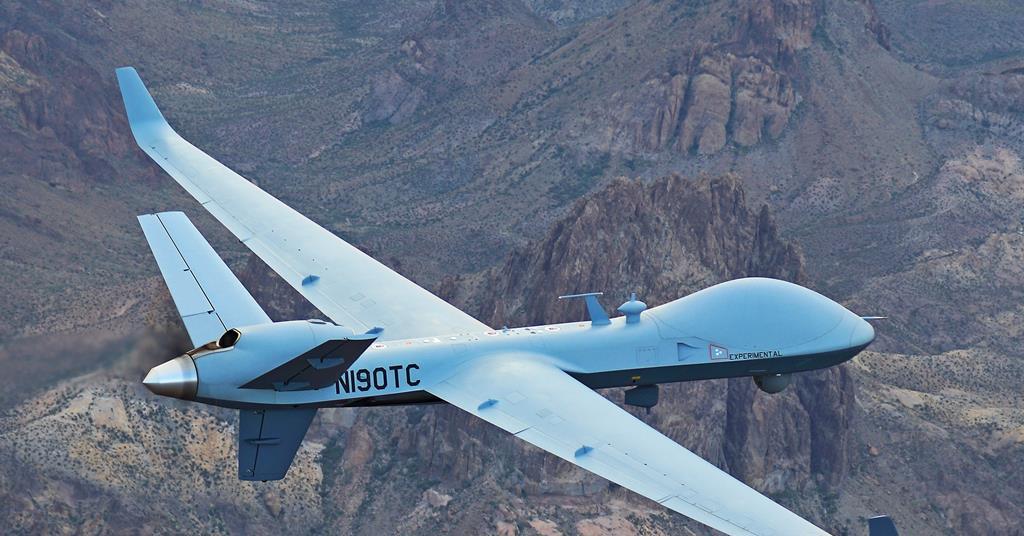Russian authority urges greater fuel risk awareness after dual-engine filter incidents
Company
Legal Links
Contact
- +44 7947 753363
- contact@skylineairporttransfers.co.uk
- 6 Walsall Street Bilston Wolverhampton WV14 0AT
Recent Posts
© Skyline Airport Transfers. Created by![]() Beaphoenix WebDesign ltd
Beaphoenix WebDesign ltd
Popular Locations:
Birmingham: Aston, Bournville, Edgbaston, Erdington, Great Barr, Hall Green, Handsworth, Harborne, Northfield, Quinton, Soho, Sutton Coldfield, Amblecote, Brierley Hill, Coseley, Cradley, Gornal, Halesowen, Kingswinford, Lye, Netherton, Sedgley, Stourbridge, Quarry Bank, Bearwood, Blackheath, Cradley Heath, Great Bridge, Old Hill, Rowley Regis, Smethwick, Tipton, Tividale, Wednesbury, West Bromwich, Balsall Common, Bickenhill, Castle Bromwich, Chelmsley Wood, Dorridge, Elmdon, Hampton in Arden, Kingshurst, Knowle, Marston Green, Meriden, Monkspath, Hockley Heath, Shirley, Aldridge, Birchills, Bloxwich, Brownhills, Darlaston, Leamore, Palfrey, Pelsall, Pheasey, Shelfield, Streetly, Willenhall, Bilston, Blakenhall, Bushbury, Compton, Ettingshall, Heath Town, Oxley, Penn, Tettenhall, Wednesfield, Burntwood, Lichfield, Cannock, Rugeley, KIDDERMINSTER, Brierly Hill,
STOURPORT-ON-SEVERN
Coventry: Allesley, Binley, Keresley, Stoke, Tile Hill
Leicester: Abbey Rise, Ashton Green, Aylestone, Beaumont Leys, Bede Island, Belgrave, Blackfriars, Braunstone, Braunstone Frith, Bradgate Heights, Clarendon Park, Crown Hills, Dane Hills, Evington, Evington Valley, Eyres Monsell, Frog Island, Goodwood, Hamilton, Highfields, Horston Hill, Humberstone, Humberstone Garden, Kirby Frith, Knighton, Mowmacre Hill, Netherhall, Newfoundpool, New Parks, North Evington, Northfields, Rowlatts Hill, Rowley Fields, Rushey Mead, Saffron, Southfields, South Knighton, Spinney Hills, Stocking Farm, Stoneygate, St. Matthew’s, St. Mark’s, St. Peters, Thurnby Lodge, West End, West Knighton, Western Park, Woodgate
Derby: Matlock, Ripley, Ashbourne, ILKESTON, SWADLINCOTE , BURTON-ON-TRENT, BAKEWELL,
ALFRETON, BELPER, HEANOR
Telford: Market Drayton, Newport, Shifnal, Broseley, Much Wenlock
Stoke: Stoke-on-Trent, Newcastle, Leek, Uttoxeter, Stone, Stafford
Worcester: Worcester, Droitwich, Pershore, Broadway, Evesham, Malvern, Tenbury Wells
Gloucester: Gloucester, Cheltenham, Stroud, Cirencester, Tewkesbury, Badminton, Berkeley, Blakeney, Chipping Campden, Cinderford, Coleford, Drybrook, Dursley, Dymock, Fairford, Lechlade, Longhope, LydbrookLydney, Mitcheldean, Moreton-in-Marsh, Newent, Newnham, Ruardean, Stonehouse, Tetbury, Westbury-on-Severn, Wotton-under-Edge.
Nottingham: Nottingham, Sutton-in-Ashfield, Mansfield, Newark, Southwell, Grantham, Sleaford
Leicester: Leicester, Hinckley, Loughborough, Melton Mowbray, Oakham Market, Harborough, Lutterworth, Wigston, Ashby-de-la-Zouch, Ibstock, Markfield
Oxford: Oxford, Kidlington, Chipping Norton, Thame, Wallingford, Didcot, Wantage, Abingdon, Banbury, Carterton, Woodstock, Bicester, Witney, Chinnor, Watlington
Chester: Chester, Deeside, Bagillt, Buckley, Holywell, Birkenhead, Preston, Wallasey, Wirral, Neston, Ellesmere Port, Prenton
Airports we serve:
BHX: Birmingham Airport
EMA: East Midlands Airport
LHR: London Heathrow Airport
MAN: Manchester Airport
LGW: London Gatwick Airport
LTN: London Luton Airport
SOU: Southampton Airport
BRS: Bristol Airport
LPL: Liverpool John Lennon Airport
LCY: London City Airport
STN: London Stansted Airport



Russian federal air transport regulator Rosaviatsia is urging aviation organisations to pay closer attention to the risk of aircraft fuel system contamination, after assessing a number of incidents over the past two years.
Rosaviatsia states in a June bulletin that the presence of contaminants – such as resin, impurities or micro-organisms – has a “detrimental effect” on the functioning of the fuel system, causing blockage of filters and other serious issues.
It cites two separate incidents involving Red Wings Yakovlev Superjet 100s, the first of which occurred during the take-off run from Istanbul on 25 April last year.
As the aircraft reached 142kt, a clogged filter alarm for the right-hand PowerJet SaM146 engine was activated, followed by a corresponding alarm for the left-hand engine after the jet lifted off. The crew of the twinjet (RA-89156) opted to return to the airport and conducted an overweight landing.
Examination of fuel samples revealed various impurities, some with an unusually-high sulphur content, possibly from fuel which came into contact with low-quality rubber within the ground-refuelling system. Other impurities included particles similar to paint chips, and phosphorus compounds used in hydraulic fluids.
Each of the identified contaminants “could have led to blocking of the fuel filters of both engines”, Rosaviatsia says.
It says a similar incident took place six months later, on 17 October, when filter alarms on both engines of another Superjet 100 (RA-89138) were sequentially triggered during initial climb.
Fuel samples revealed a “significant amount” of cotton and cellulose fibres. Inspection of the filters showed some elements had gaps in their epoxy resin joints.
Rosaviatsia also lists a Ural Airlines Airbus A320 incident, less than a week earlier, during which the left-hand CFM International CFM56 engine’s speed declined after take-off on 12 October. The crew shut down the powerplant and returned to the airport.
Analysis of the fuel-flow regulation system found organic deposits from heavy hydrocarbons which had passed through the filters.
The bulletin refers to organic contamination of an Antonov An-24RV which activated fuel-filter alarms for both engines during the take-off roll on 5 July 2023, prompting the crew to abort at nearly 100kt.
Rosaviatsia also highlights incidents affecting helicopters.
Its bulletin stresses the need to “analyse constantly and evaluate potentially dangerous factors” when providing aviation fuel supply services, tightening control over fuel quality, and carrying out unscheduled inspections of filter elements in refuelling facilities.
Source link
Share This:
admin
Plan the perfect NYC Memorial Day weekend
Pack only what you need and avoid overpacking to streamline the check-in and security screening…
LA’s worst traffic areas and how to avoid them
Consider using alternative routes, such as Sepulveda Boulevard, which runs parallel to the 405 in…
Denmark advances on Lockheed Martin AGM-114R Hellfire missile acquisition from USA
Denmark has secured approval from the US Department of State to advance a planned acquisition…
Turkish Airlines embarks on major infrastructure projects including cargo and MRO centres
Turkish Airlines has participated in groundbreaking ceremonies for multiple infrastructure projects including Turkish Technic’s engine…
IAG names successor as finance chief Cadbury steps down
British Airways and Iberia parent company IAG’s chief financial officer, Nicholas Cadbury, is to step…
Nacelle damage to 737 undetected until day after Faro landing incident: investigators
Portuguese investigators have disclosed that a Ryanair Boeing 737-800 flew four flights before the discovery…
US military intercepts Russian-linked oil tanker Bella 1 in North Atlantic
The US military has seized a Russian-flagged oil tanker in international waters off the coast…
Performance indicators feature in revised Russian flight-safety programme
Russia’s government has approved a new flight-safety programme on which it intends to establish a…
BA A380 turbulence probe credits live-weather app with limiting injury risk
UK investigators have highlighted the benefit of access to real-time weather apps, after a turbulence…
Armed Forces of Malta signs deals for extra Beechcraft King Air maritime patrol aircraft and Leonardo Helicopters AW139
The Armed Forces of Malta Air Wing is to expand its fleets of Beechcraft King…
Russia arms Shahed drones with anti-aircraft missiles to target Ukrainian fighters and helicopters
In the latest instance of rapidly evolving drone tactics being used in the Russia-Ukraine War,…
Airlines cancel hundreds of Schiphol flights as winter storms hit KLM and Air France operations
Amsterdam’s Schiphol airport has been besieged by a fierce winter storm, resulting in hundreds of…